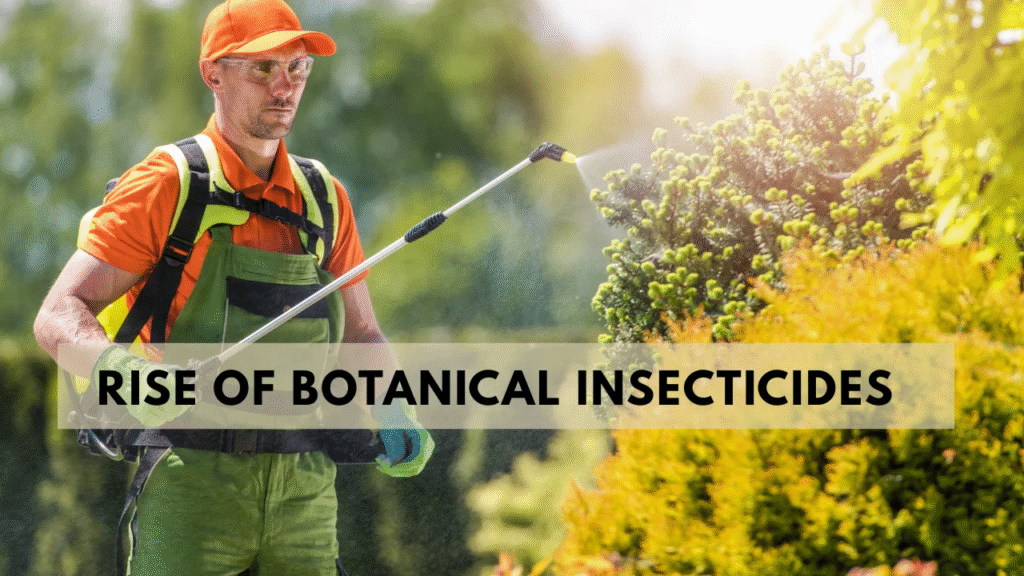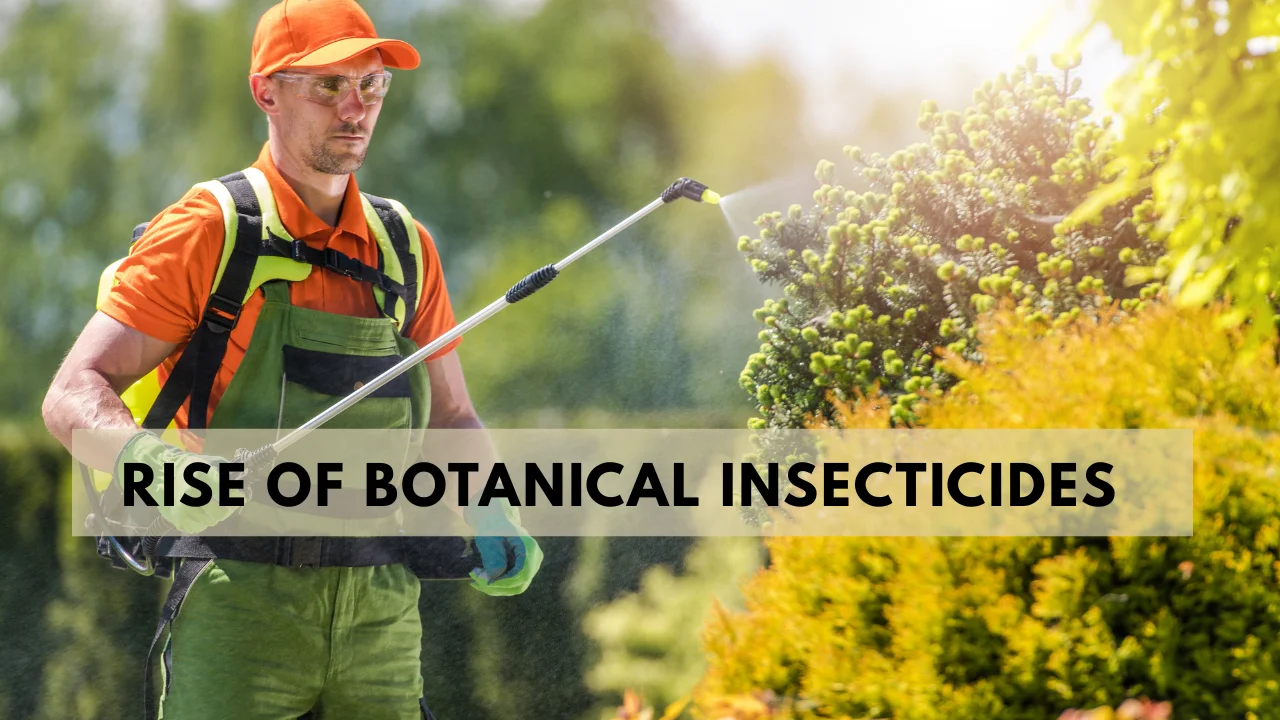
As the world grapples with the ecological consequences of chemical farming, the agricultural sector is undergoing a quiet revolution—led not by synthetic science, but by the intelligence of plants. Botanical insecticides, once overlooked in the age of chemical dominance, are emerging as a promising alternative to safeguard crops while preserving ecosystems. At the heart of this shift is EcoFlora, a movement and concept symbolizing the integration of agriculture and innovation rooted in nature’s chemistry.
Understanding Botanical Insecticides
Botanical insecticides are pest control substances derived directly from plant sources. Unlike synthetic pesticides, these products are biodegradable, less toxic to non-target organisms, and minimize environmental residues. Common plant sources include neem, pyrethrum, garlic, citronella, and rotenone—all of which have natural pest-repelling or killing properties.
Key Benefits of Botanical Insecticides:
- Low persistence in the environment
- Reduced risk of pest resistance buildup
- Compatibility with integrated pest management (IPM)
- Safer for farm workers and consumers
- Minimal impact on pollinators and beneficial insects
EcoFlora’s Role in Changing Crop Protection
EcoFlora symbolizes a growing community and knowledge-sharing platform promoting plant-based agricultural solutions. Through education, research dissemination, and innovation tracking, EcoFlora advocates for a nature-aligned approach to farming—particularly by highlighting botanical crop protection tools that are sustainable, cost-effective, and scalable for smallholders.
EcoFlora promotes:
- Awareness of plant-derived biopesticides
- Farmer training on botanical formulations
- Field-level case studies and success models
- Innovations that integrate traditional knowledge with modern techniques
Why the Shift is Happening Now
Several global trends are accelerating the rise of botanical insecticides:
- Regulatory Pressure: Many countries are phasing out harmful synthetic pesticides, creating market opportunities for biopesticides.
- Consumer Demand: The global rise in organic and residue-free food preferences is pushing growers to adopt safer pest management tools.
- Climate Impact: Changing pest behavior due to global warming requires more adaptive, ecologically resilient control methods.
- Resistance Crisis: Overuse of chemicals has led to resistance in many pests, reducing the efficacy of conventional pesticides.
Challenges in Adoption
Despite the promise, botanical insecticides face hurdles:
- Limited shelf life and storage stability
- Variable efficacy under different climatic conditions
- Lack of awareness and access among small-scale farmers
- Inconsistent regulatory frameworks across countries
EcoFlora works to bridge these gaps by:
- Promoting localized research
- Connecting farmers with botanical input providers
- Advocating for clearer biopesticide policies
Case Studies of Botanical Success
1. Neem-Based Pest Control in South Asia
In India and Bangladesh, neem oil sprays have significantly reduced the use of synthetic pesticides in vegetables and cotton, while improving yields and reducing pest resistance.
2. Pyrethrum in East Africa
Kenya and Rwanda have revived pyrethrum farming, promoting natural insecticide production for both domestic use and export.
3. Garlic-Chili Extracts in Southeast Asia
Smallholder farmers in Vietnam and the Philippines use homemade botanical brews to control caterpillars, aphids, and leaf miners, with minimal costs.
Overview Table: Botanical vs Chemical Insecticides
| Feature | Botanical Insecticides | Chemical Insecticides |
|---|---|---|
| Source | Plant-based (natural origin) | Synthetic chemicals |
| Environmental Impact | Low | High |
| Pest Resistance Risk | Low | High |
| Residue on Crops | Minimal | Significant |
| Safety for Beneficial Insects | Generally safe | Often harmful |
| Popular Examples | Neem, Pyrethrum, Rotenone | Chlorpyrifos, Cypermethrin |
Strategic Action Points Promoted by EcoFlora
- Farmer Education Campaigns: Training rural communities to prepare and use botanical formulations safely.
- Policy Advocacy: Encouraging governments to include botanicals in national pest management strategies.
- Research Support: Collaborating with universities and agri-startups to study regional botanicals with insecticidal properties.
- Market Linkages: Connecting smallholder growers with biopesticide manufacturers.
- Data Sharing: Publishing trials and field-test data for public use.
Botanical Innovation Outlook (Summary Table)
| Focus Area | Current Status | Emerging Trends | EcoFlora Contribution |
|---|---|---|---|
| Farmer Awareness | Moderate | Growing interest via digital platforms | Training guides and resources |
| Commercial Availability | Expanding slowly | Rise in startups and organic retailers | Product reviews, supplier maps |
| Research Investment | Limited | Targeted studies in tropical crops | Funding links, case data |
| Policy Support | Inconsistent | Harmonization efforts in ASEAN & EU | Advocacy briefs |
| Integration with IPM | Promising | Custom mixes with traps and bioagents | Knowledge partnerships |
Final Thoughts
The rise of botanical insecticides is more than a trend—it is a transformative shift in crop protection that aligns with environmental, economic, and social sustainability. As EcoFlora continues to advocate for plant-based pest management, the future of farming looks greener, smarter, and safer for all.
3 Best One-Line FAQs
Q1: What makes botanical insecticides safer than chemical pesticides?
A: They’re derived from plants, degrade quickly, and pose minimal risk to humans and beneficial insects.
Q2: Can farmers make their own botanical insecticides?
A: Yes, many formulations like neem, garlic, and chili extracts can be prepared on-farm with guidance.
Q3: Is EcoFlora an official pesticide supplier?
A: No, EcoFlora is an independent platform that promotes knowledge on botanical crop protection.

